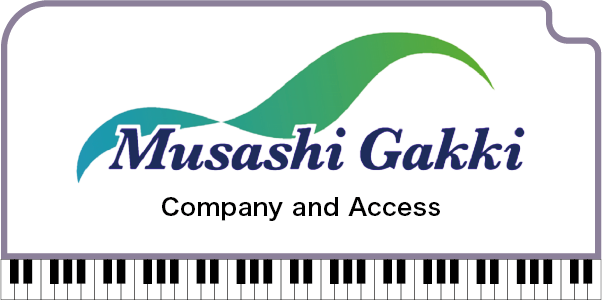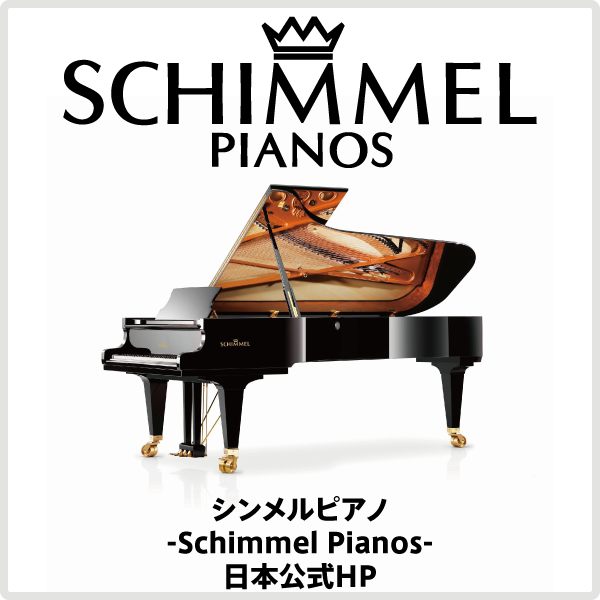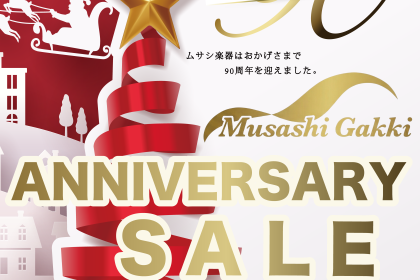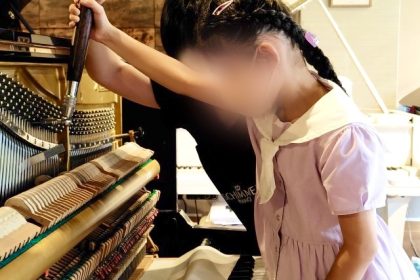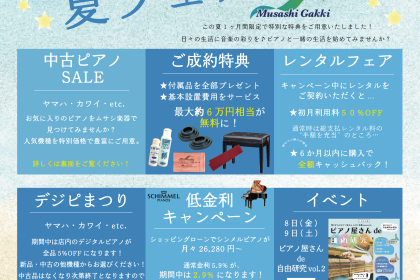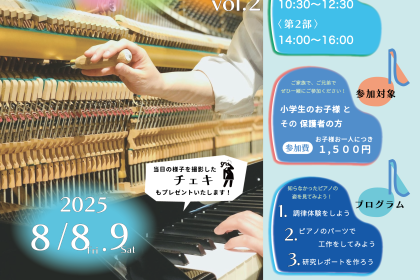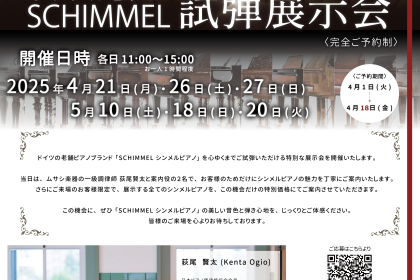We have certified first-class piano tuners on staff.
With careful tuning, voicing, and regulation, your piano will come to life.
To maintain the beautiful tone of your precious piano, we recommend regular tuning, voicing, and regulation.
Pianos, which use many natural materials, are very delicate instruments. At the same time, the strings of a piano are under a strong force of about 90kg per string, with a total of 20 tons of pressure on the entire piano. Due to this, regardless of usage frequency, slight changes in environmental conditions such as temperature and humidity will gradually cause the sound to go out of tune.
Tuning can correct any pitch issues, voicing adjusts the tone, and regulation modifies the touch of the keys.

〈Piano tuners with reliable skills are on staff.〉

Musashi Gakki, which began its piano tuning business in 1965, has supported customers with reliable techniques passed down through generations. We are happy to assist with any questions related to pianos, as well as any technical concerns.
Currently, three tuners are on staff, including technicians who have received training from Steinway Japan, equipping them with world-class skills.
Even if you have not purchased your piano from us, feel free to consult us.
Your piano, a precious partner, will be in the best hands with Musashi Gakki’s technicians.
Click here for the tuner proflies.
Price List
The prices listed below are rough estimates. The final cost may vary depending on the condition of the piano or additional services required. At Musashi Gakki, we always confirm the price and menu with the customer before proceeding with any work. There will be no changes in pricing or services once the work has begun, so you can confidently place your order.
| Upright Piano Tuning | ¥16,500 |
| Grand Piano Tuning | ¥18,700 |
| Voicing (Grand/ Upright Piano) | ¥33,300 |
| Regulation Basic 6-point Set (Grand/ Upright Piano) | ¥33,300 |
| Preliminary Inspection※1 | ¥3,300 |
※All prices are inclusive of tax.
<One-Year Warranty System>
If you request tuning within one year of the previous tuning by our tuner, we will provide a one-year warranty after the tuning.
This warranty covers maintenance such as keys not returning properly or pedals not working well, as well as minor issues like accidentally dropping a pencil inside the piano.
However, repairs related to broken strings, replacement of consumables, changes caused by excessive humidity or dryness, and repairs for malfunctions or damage are not covered.
Piano Adjustment Work Explanation
| Tuning
We will adjust the piano’s pitch and tone to the appropriate pitch and tuning. Pianos, which use many natural materials, are highly sensitive to changes in the surrounding environment. Even if you don’t feel the sound is out of tune, we recommend regular tuning, much like a routine dental checkup.
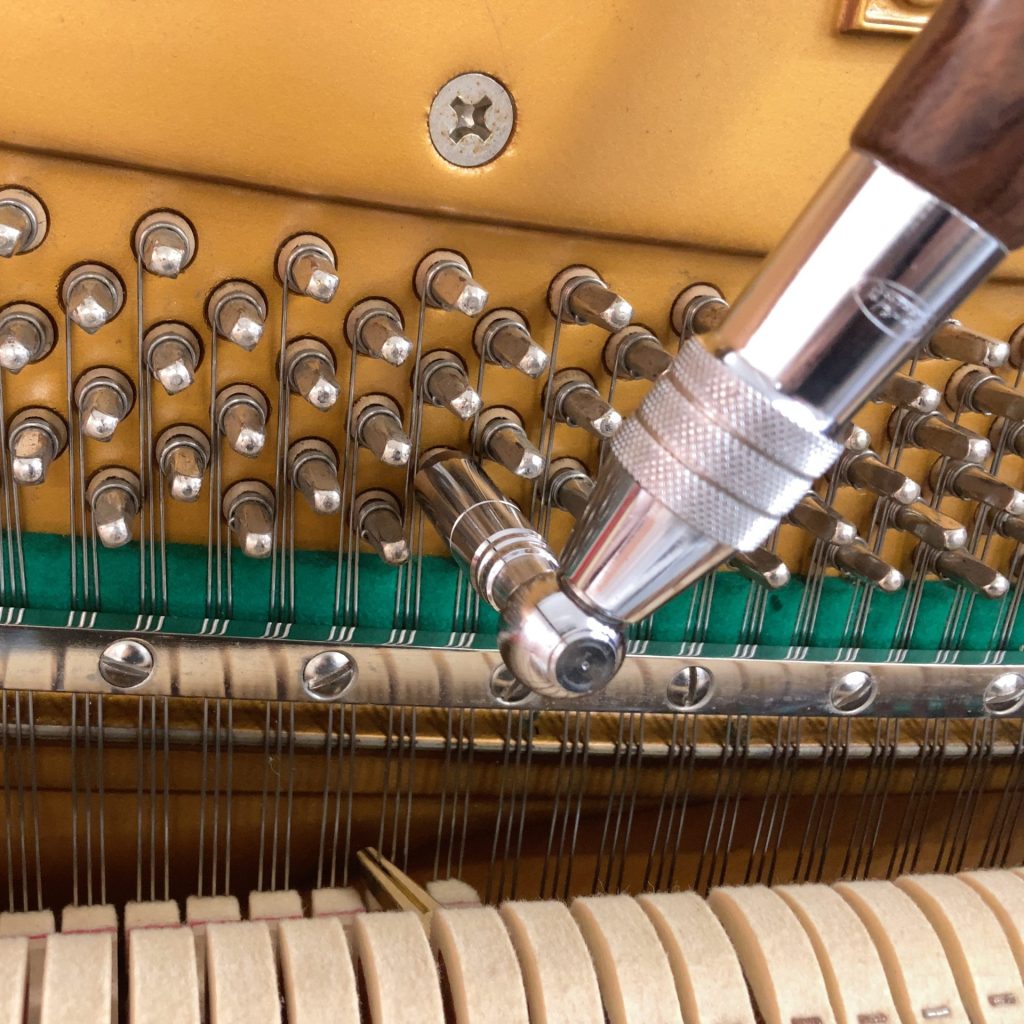
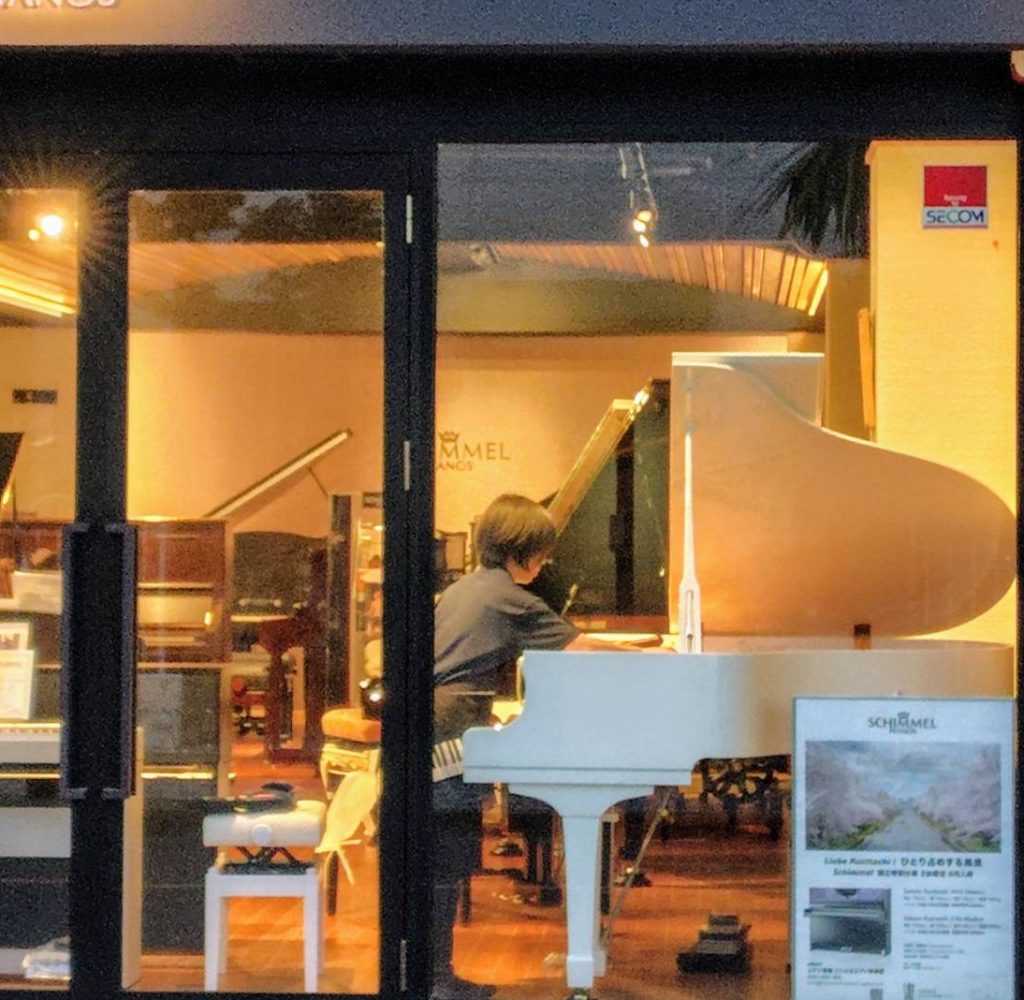
| Voicing
The piano's hammers are made of felt, and over time, the areas that contact the strings get compressed, leaving deep marks. This can result in a diminished sound or uneven tonal quality. During voicing, we work to make the 88 notes uniform by reshaping the hammers with a file or softening the felt by inserting needles.
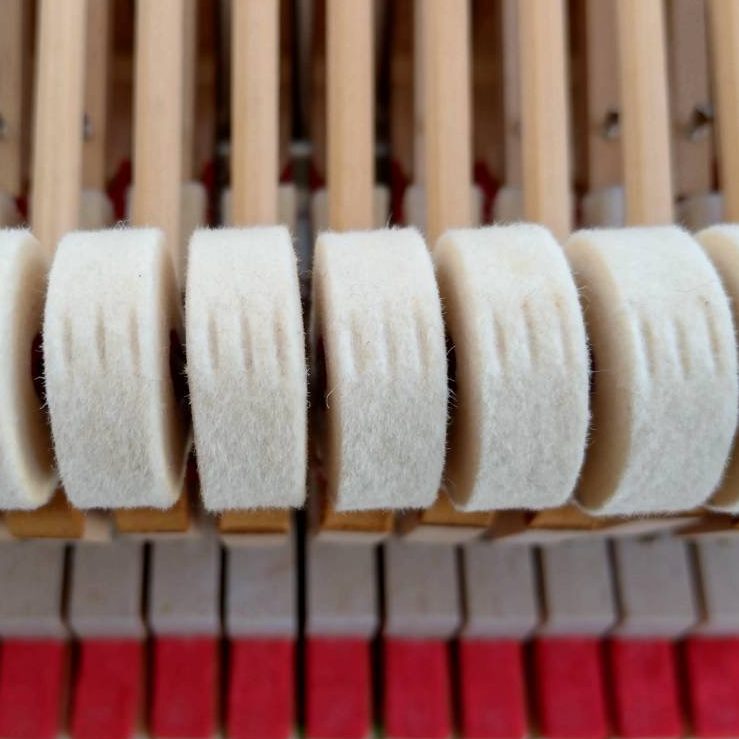
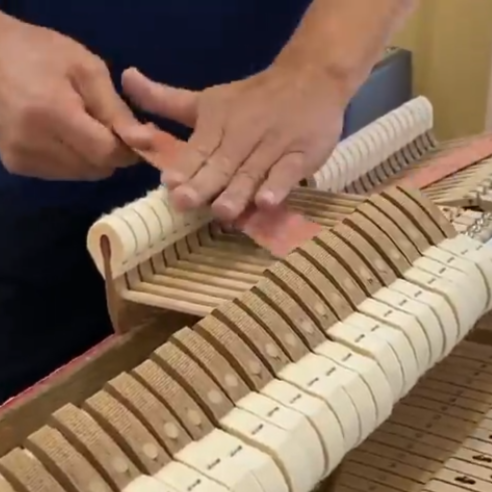
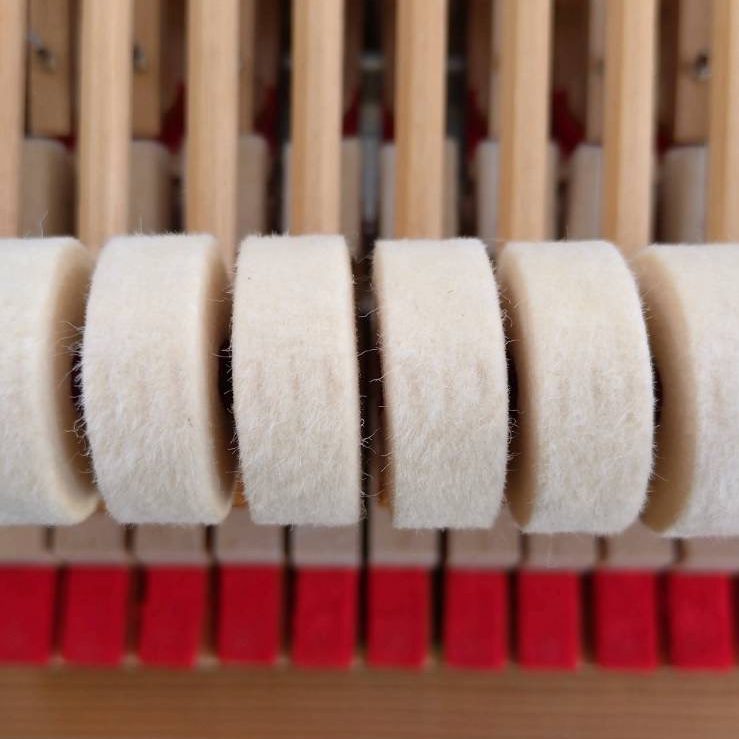
| Regulation: Basic 6-point Set
Regulation refers to adjusting the aspects of touch and feel. Over time, the internal action and key components can wear down, which may lead to a loss of the proper feel. The regulation process adjusts the internal action to ensure uniform touch across all 88 keys. The basic 6-point set is essential for touch-related adjustments, but additional adjustments can be made as necessary.
① Hammer Alignment
When the hammer strikes the strings, we adjust it to hit the string at the correct point to produce the proper tone. If the hammer’s strike point deviates from the center of the three strings, the timing of the tone becomes uneven, causing tonal inconsistencies.
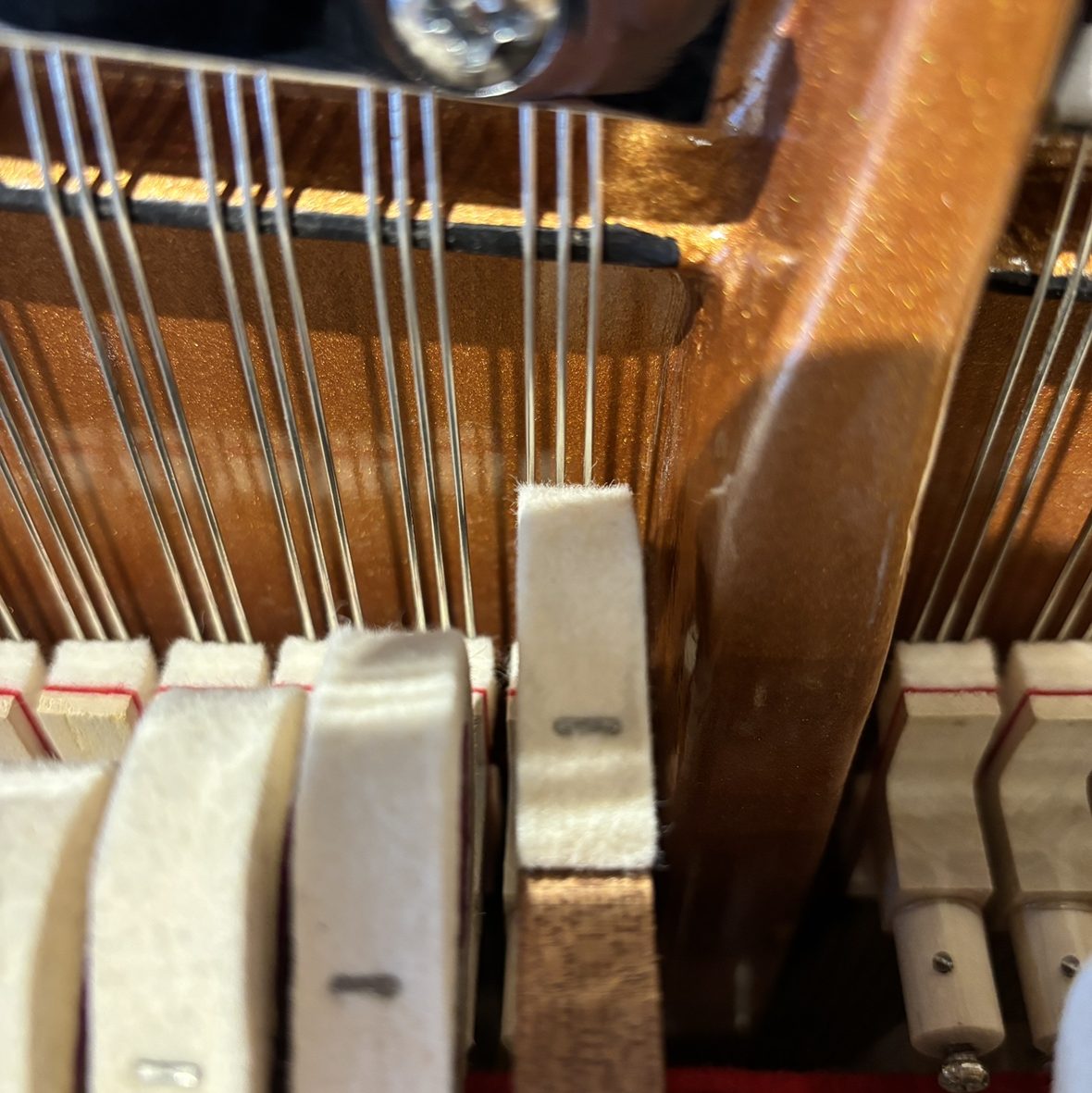

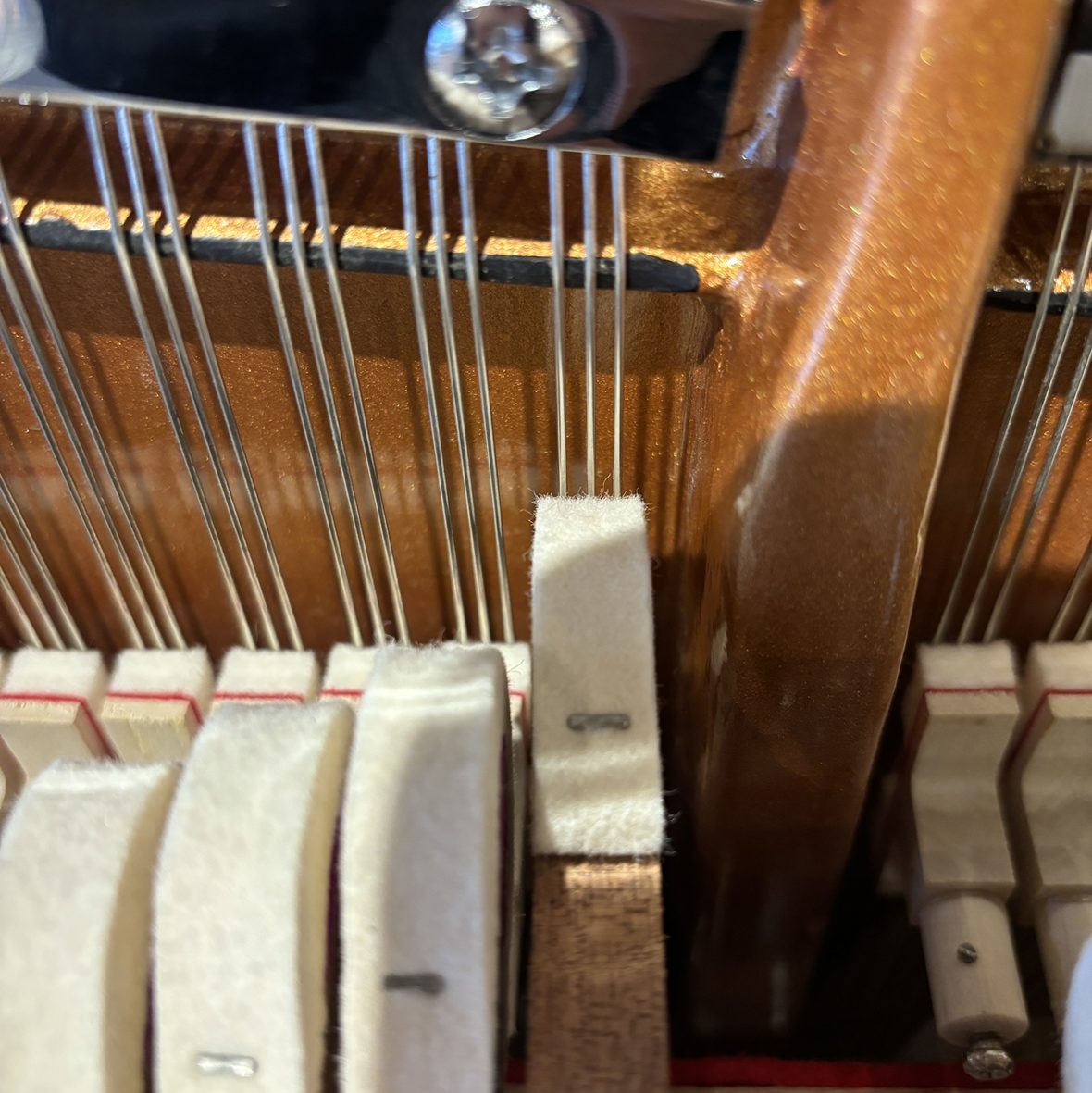
② Lost Motion Adjustment
We adjust the mechanism from the keys to the hammers to ensure that the force of the key press is correctly transferred. By adjusting the capstan (for upright pianos) or the jack (for grand pianos), we ensure that the force from the key press is efficiently transmitted to the hammer without any loss. The following photos are provided for easy understanding using a model.

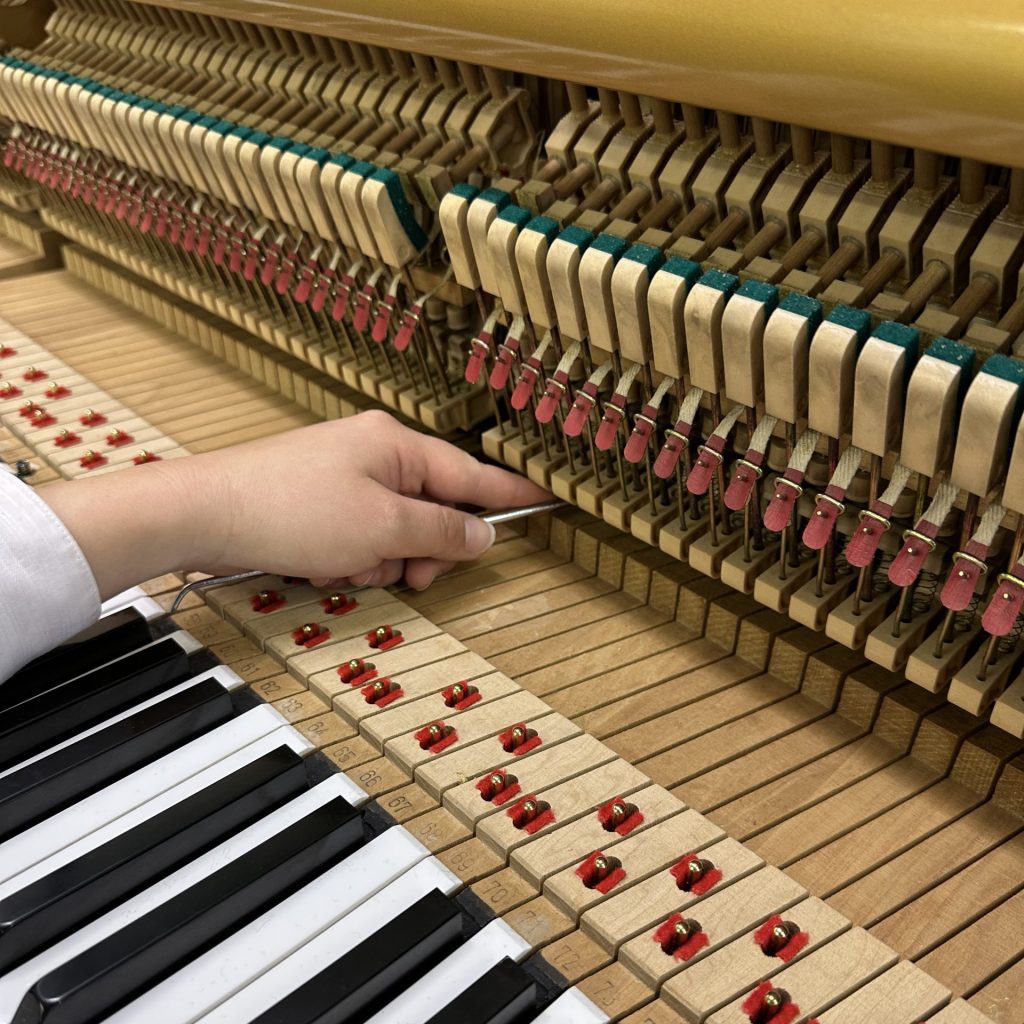
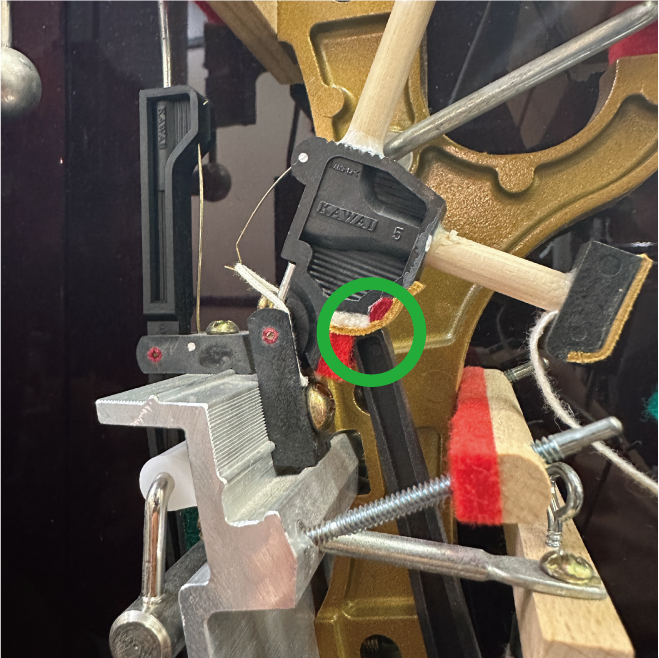
③ Let-off Adjustment
When pressing the keys slowly, the hammer moves closer to the strings, but just before it hits the strings, it returns slightly. This happens because a part called the jack detaches from the butt. At this moment, you can feel a slight "clunk" in your hand. By properly adjusting the proximity of the hammer, which can change due to years of use or environmental factors, more delicate playing becomes possible.

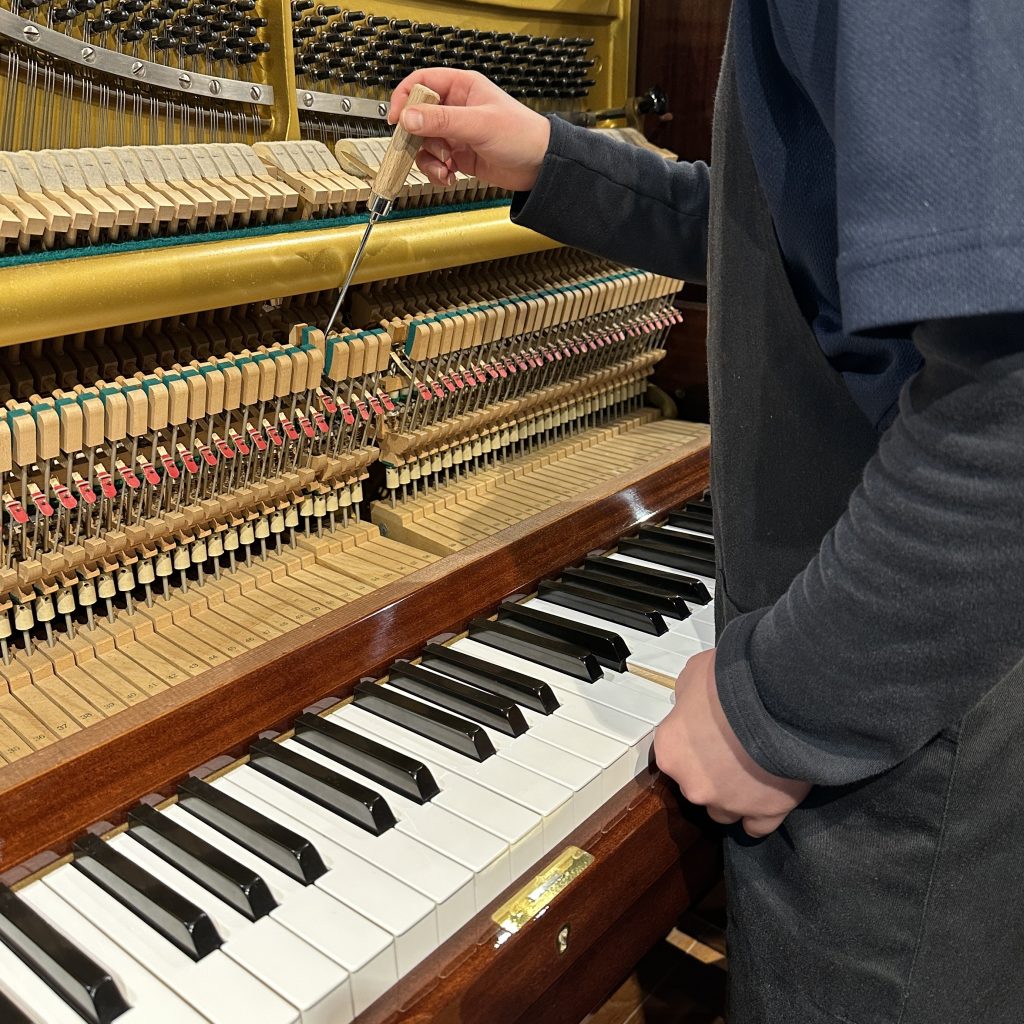
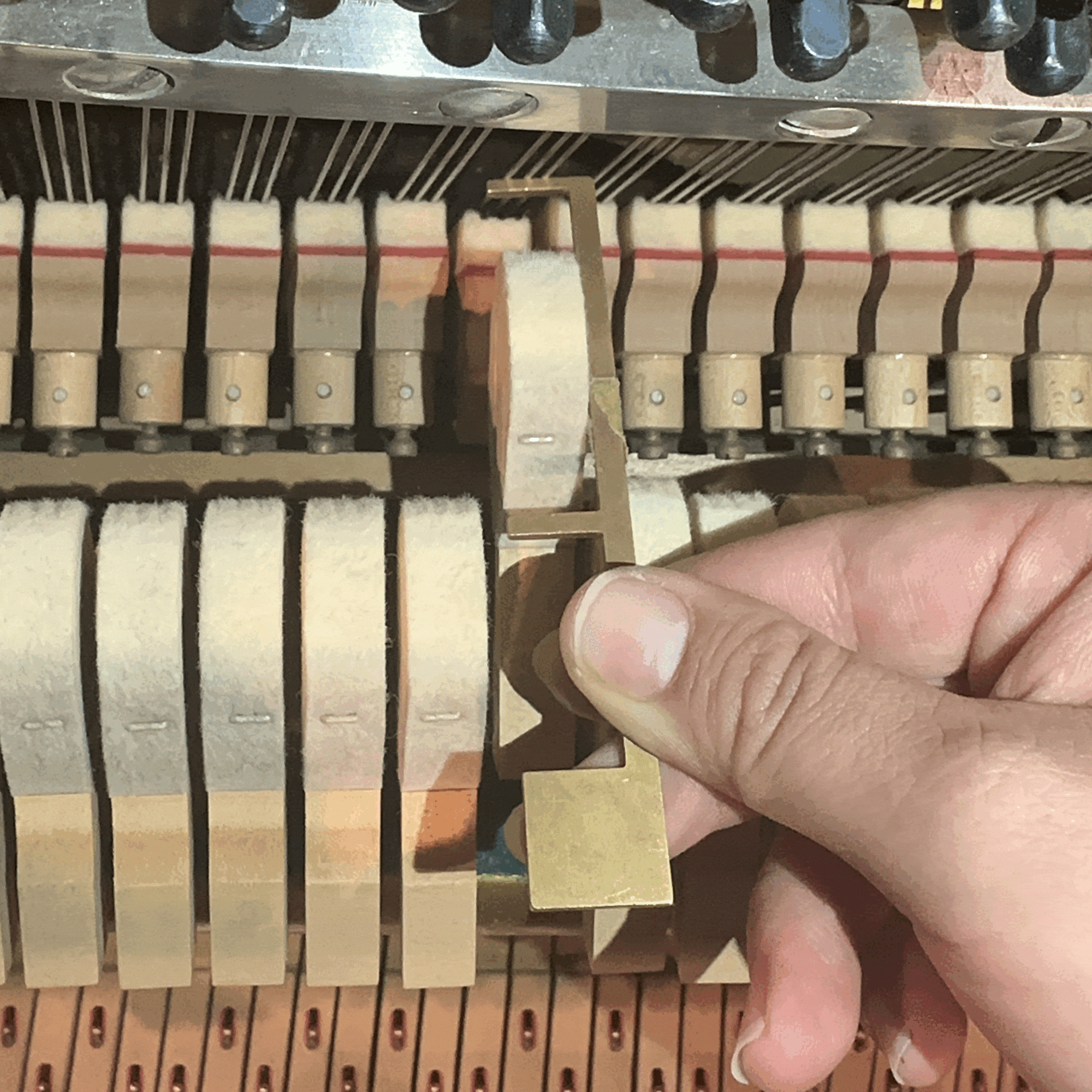
④ Key Height Adjustment
We adjust the height of the keys to ensure that all 88 keys are uniform. The keys are the first part of the piano that your fingers touch, making them crucial to the playing feel. If the heights of the keys vary, it directly affects the ease of playing.
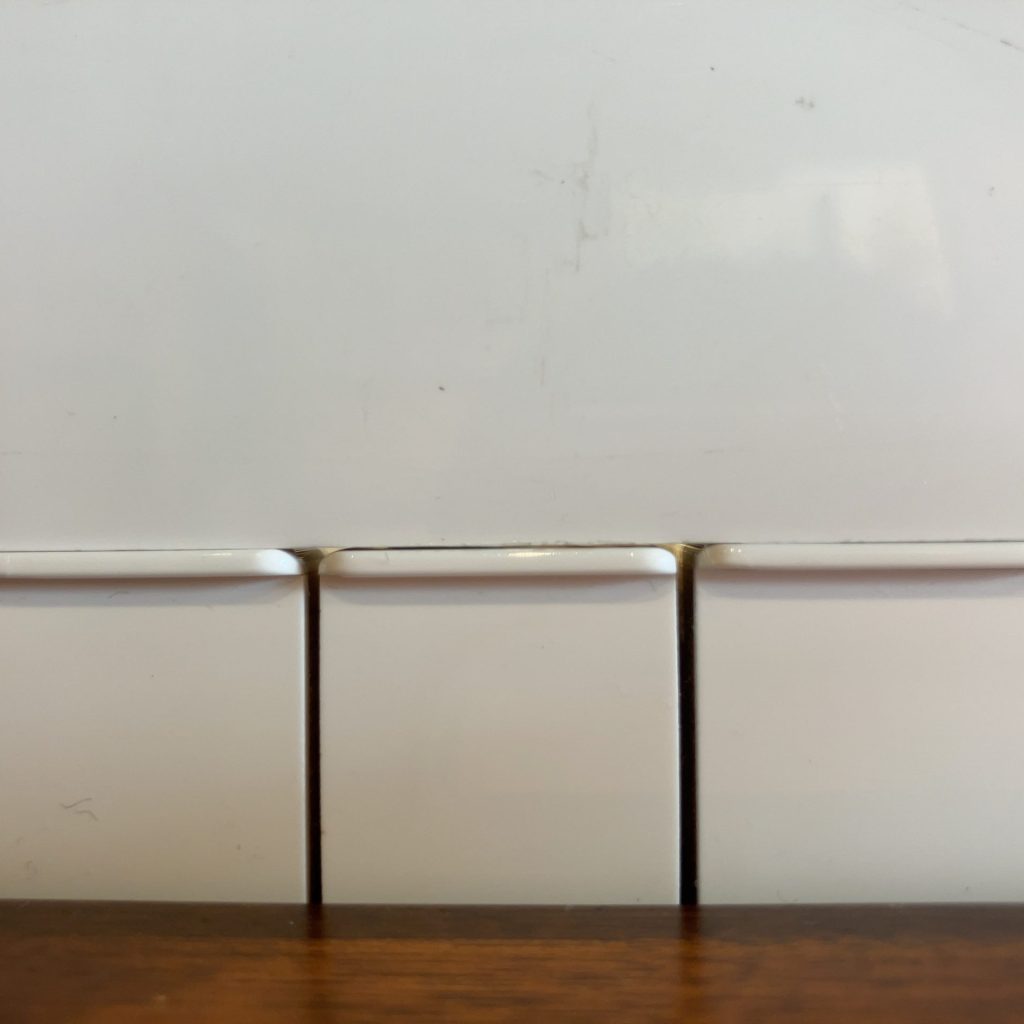

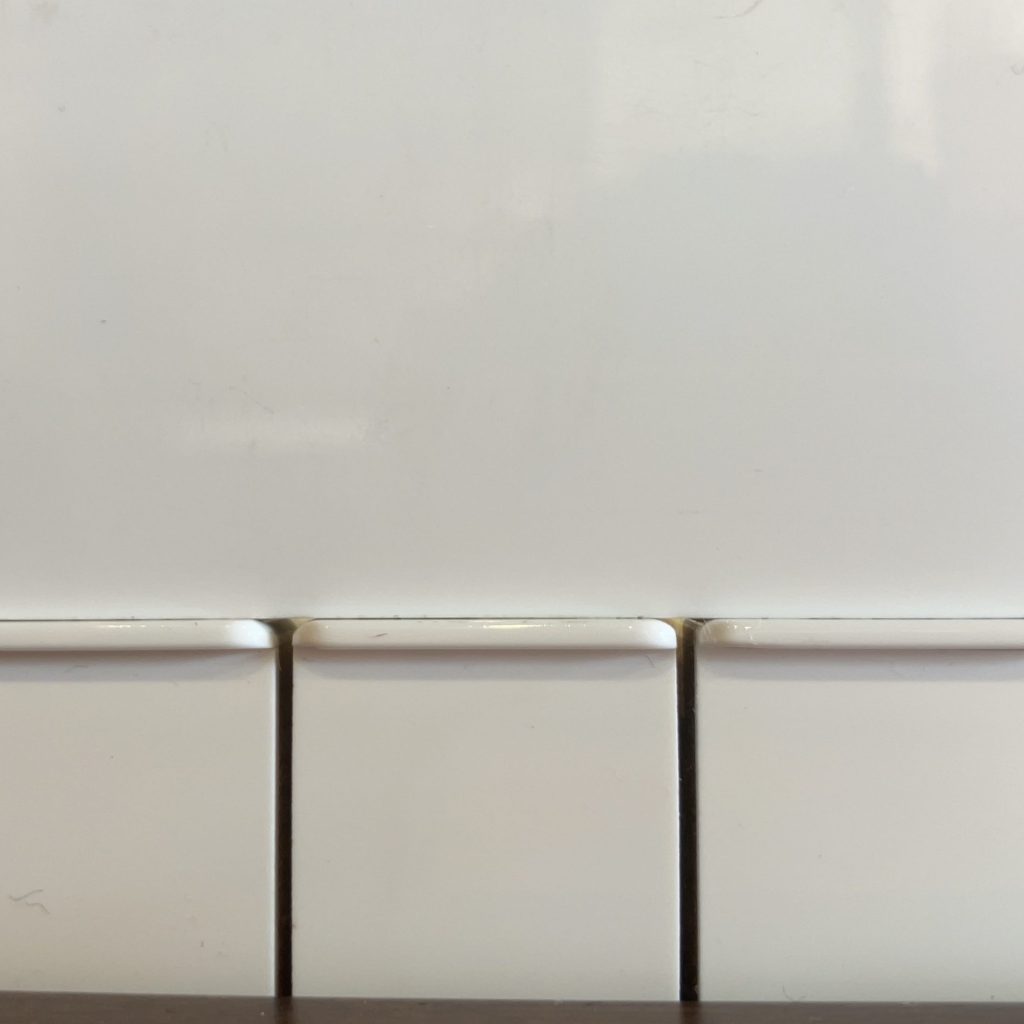
⑤ Key Depth Adjustment
The depth when the key is pressed all the way down is called "key travel." We adjust the key travel for all 88 keys to be uniform. Just like key height, this is a fundamental part that affects the playing feel. Typically, we set the depth to about 10mm.
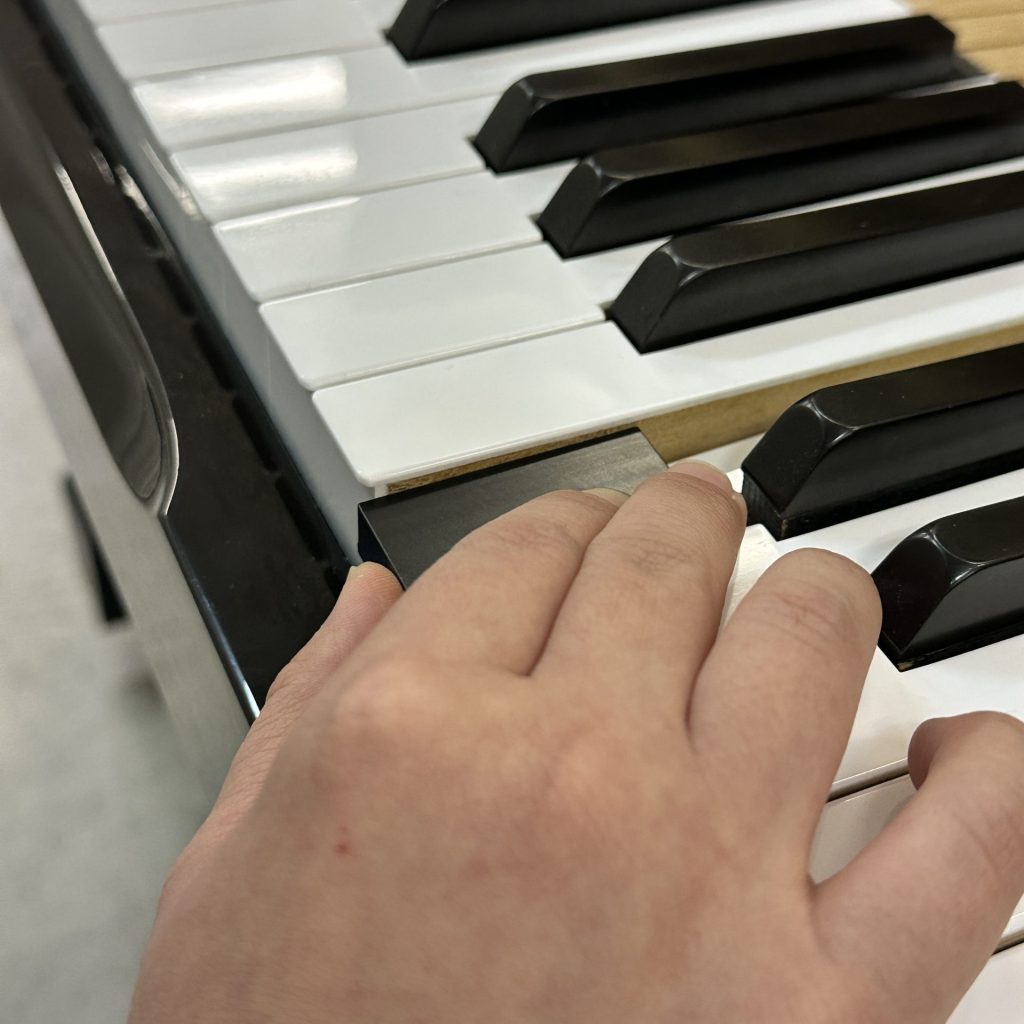
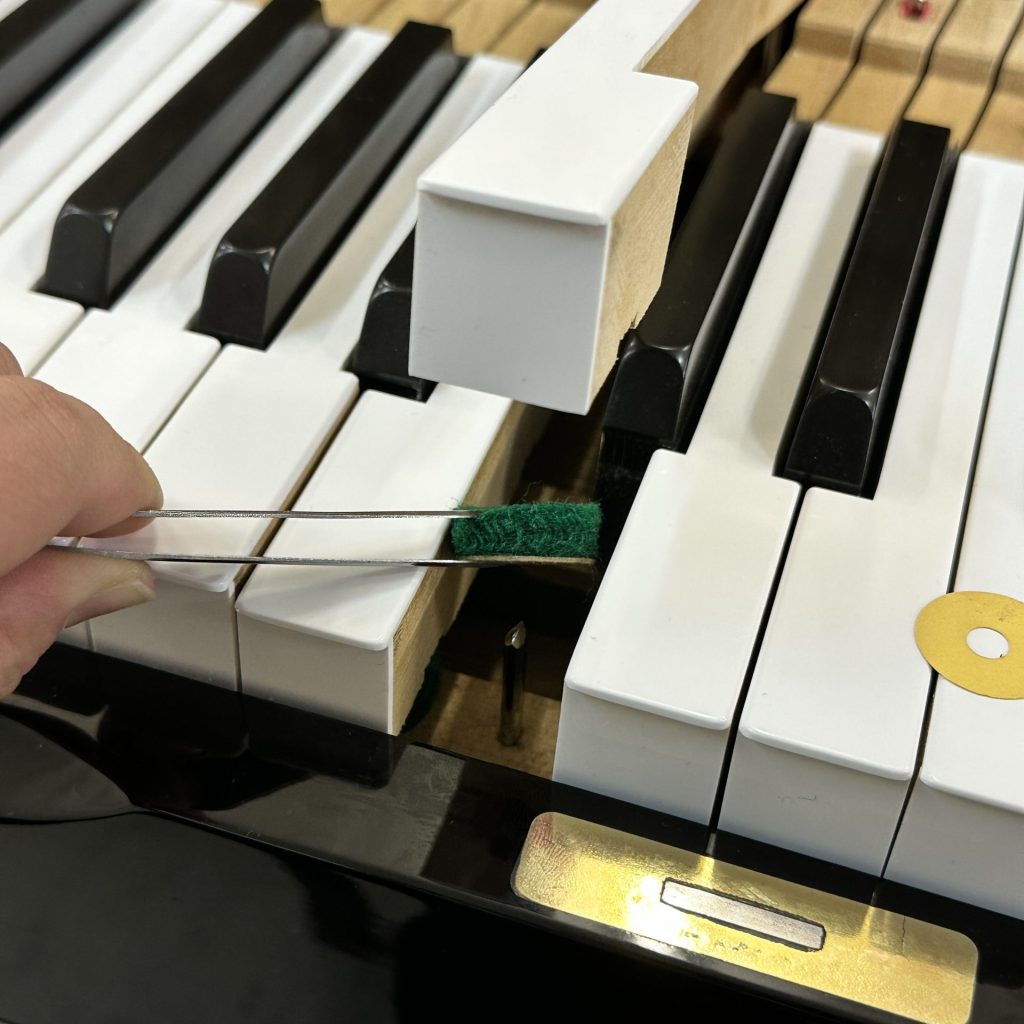

⑥ Hammer Stop Adjustment
Immediately after striking a key, the hammer moves to a slightly different position than usual to prepare for the next strike. The position where the hammer returns to is determined by the backcheck. In hammer stop adjustment, we fine-tune the backcheck to set the hammer's return position and angle, ensuring the hammer works correctly.
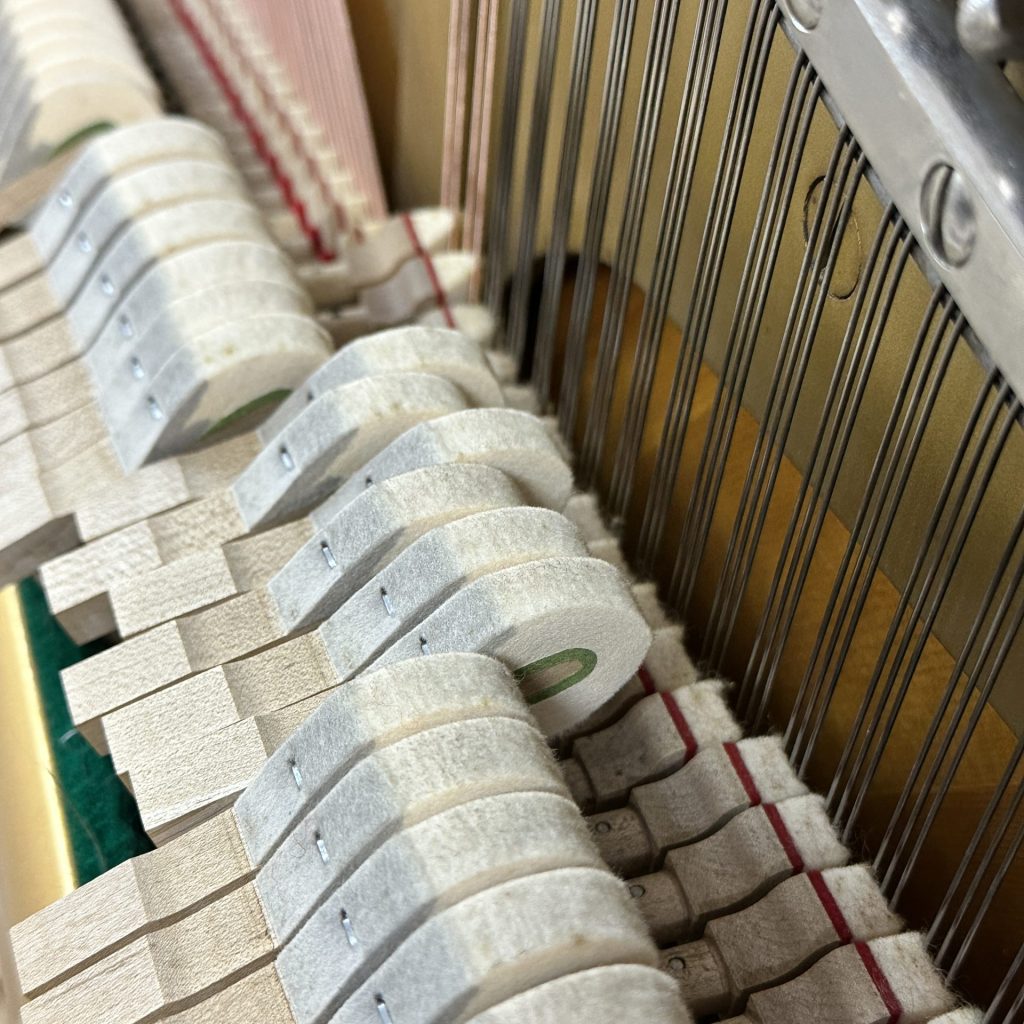
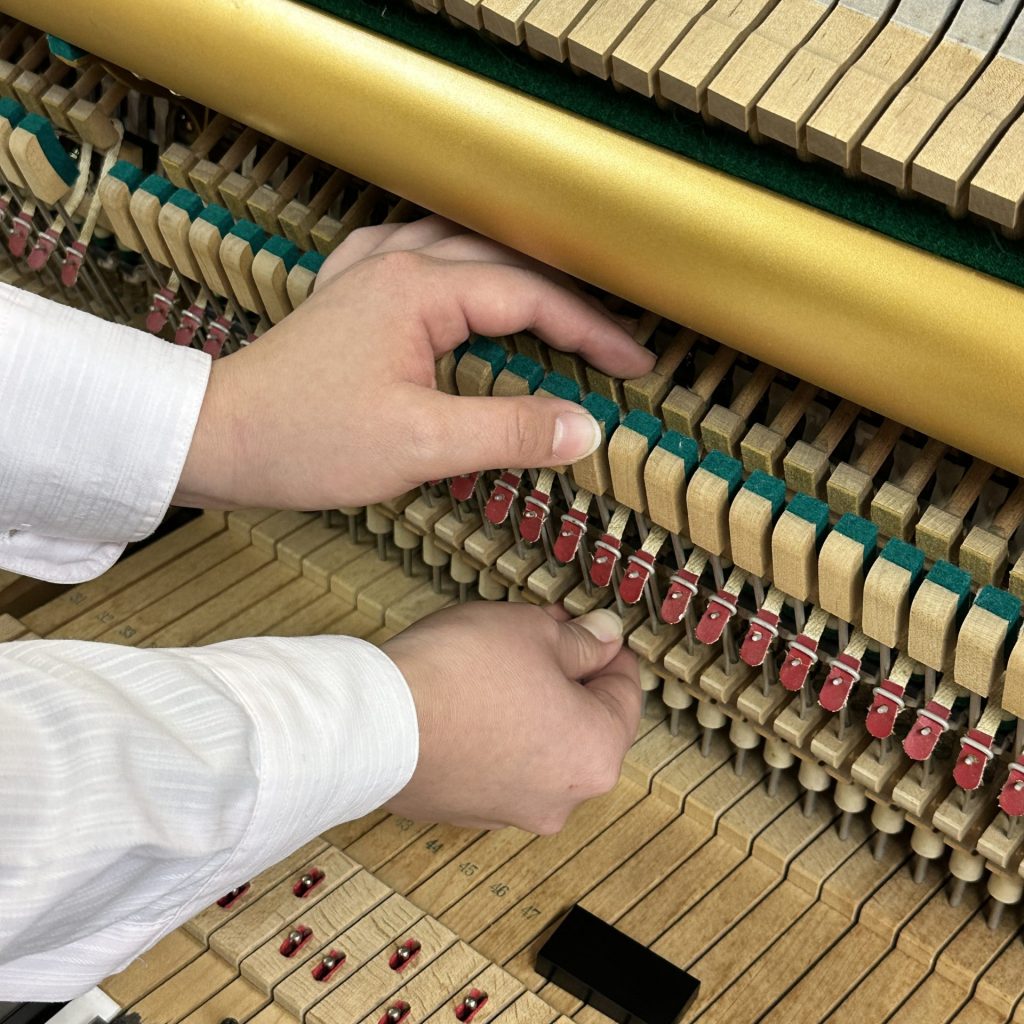
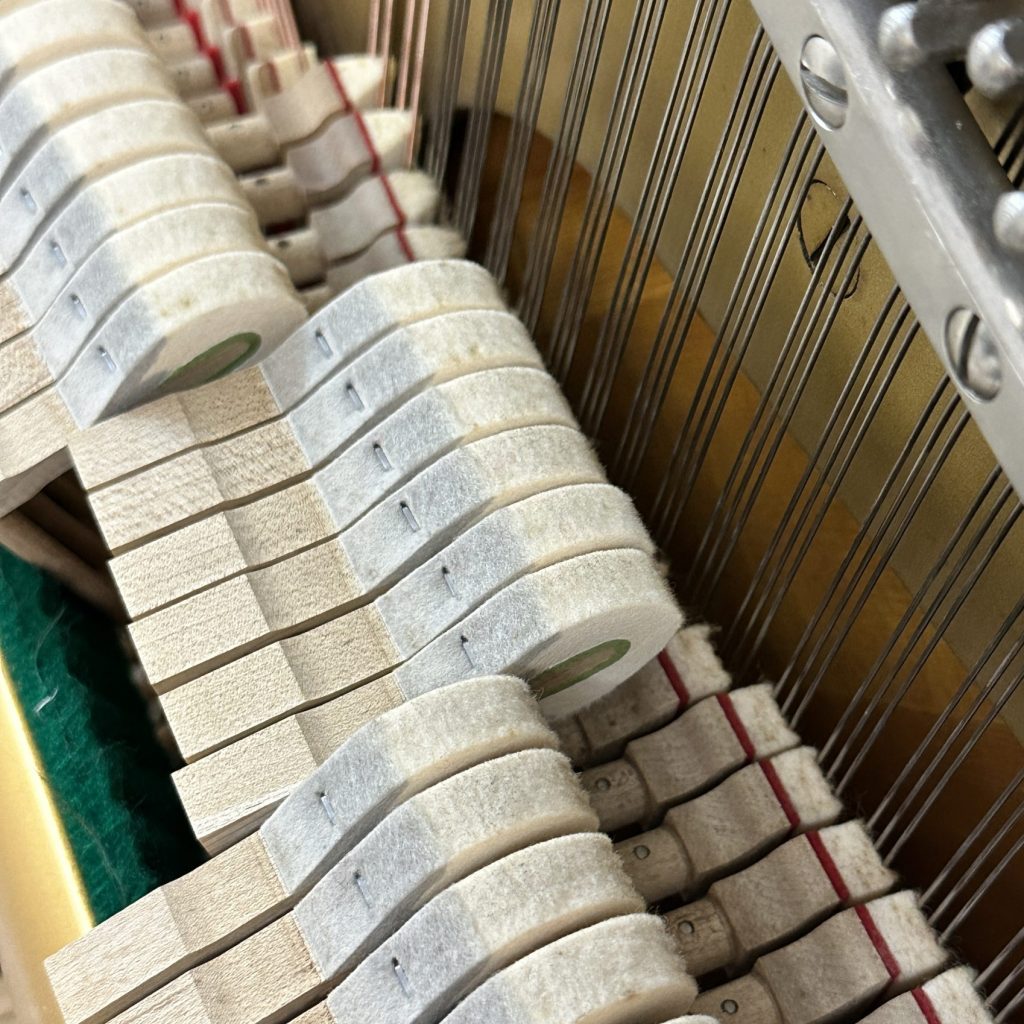
Inquiries & Quotations
We accept tuning inquiries or estimates via phone or form. If you have any questions, please feel free to contact us!
For anything related to pianos, don’t hesitate to reach out.
As a "Heartfelt Piano Shop in Kunitachi, Tokyo," Musashi Gakki offers unique recommendations and services that only we can provide.
11時~19時年中無休
(年末年始を除く)
Our Website is Open 24/7, 365 Days a Year
Follow Musashi Music on Instagram!
Check out Musashi Music’s Instagram, where our Technical Department posts interesting and insightful content twice a week! You'll get to see exclusive behind-the-scenes details that only our tech team can share.
Make sure to follow us and take a look!

